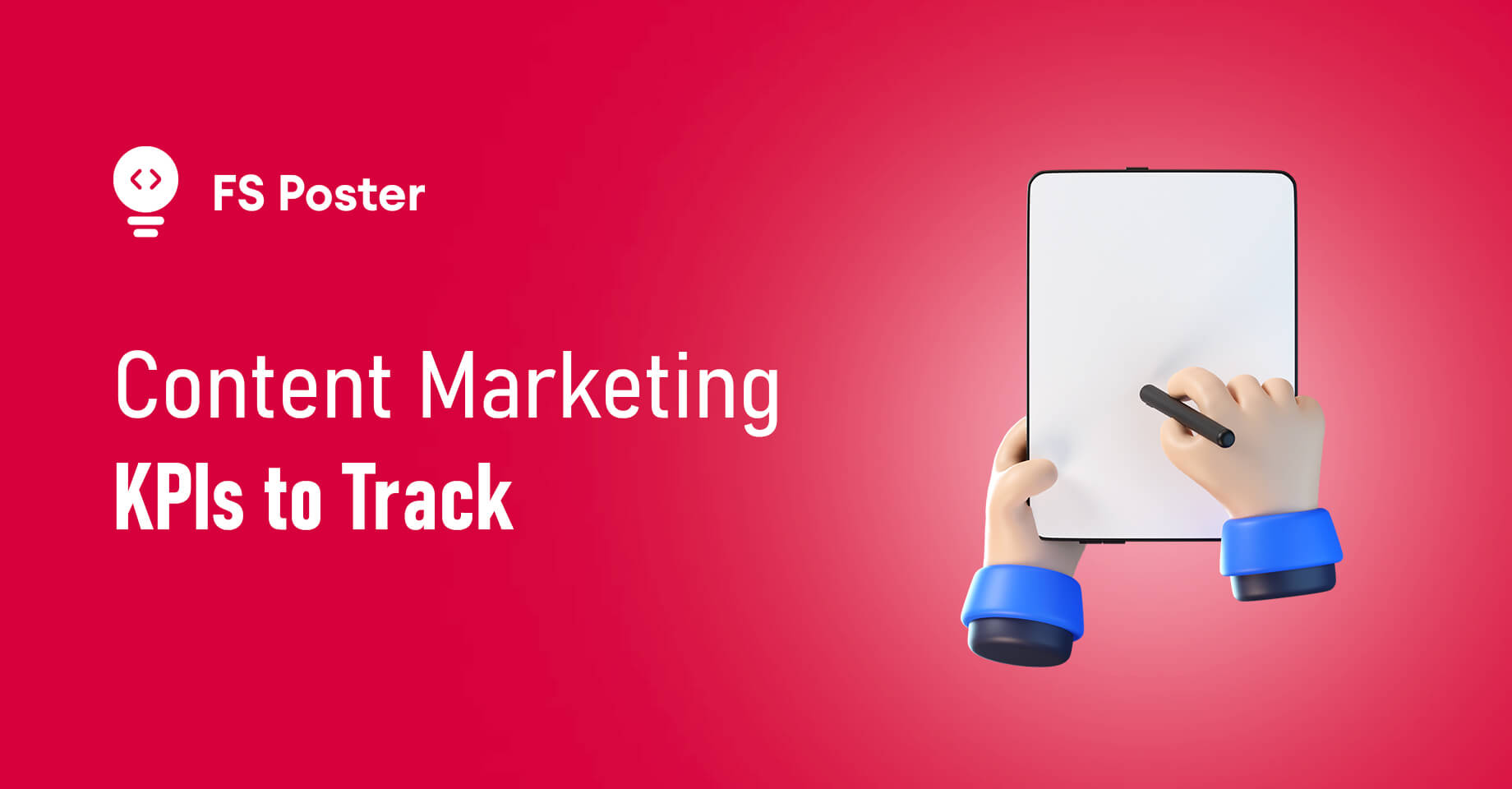
Guest Post
Author
There is no denying that to stay current and succeed in today's market, businesses need to prioritize the creation of engaging content. Having an effective content marketing strategy could be a key driver of growth for your company.
According to CMI, 71% of B2B content marketers say content marketing has become more important to them in the last year. In fact, 73% said they have a content marketing strategy.
Ensure your content marketing team has tools which allow them to deliver the results you need. Using a high quality communication platform will improve productivity and efficiency and allow your content marketing team to thrive.
Having a content marketing strategy is essential if you want your business to succeed in the future, and is definitely a good place to start. However, simply having a content marketing strategy isn’t enough. At the end of the day, you can’t improve what you don’t measure. Therefore, what’s even more important, is how well you measure the effectiveness of your content marketing strategy.
It's important to note that measuring the success of your content marketing strategy isn't just about tracking website traffic and engagement. It can also involve tracking more operational metrics such as the number of contracts signed using an electronic signature. This can provide valuable insights into the efficiency and effectiveness of your content marketing efforts.
Using content marketing KPIs, you can identify and measure the effectiveness of your content campaigns. This will allow you to make adjustments to your strategy as it develops, and ultimately improve your business performance overall.
What are KPIs?
A Key Performance Indicator, or KPI, is the terminology used to describe any measurable data which indicates how well your business is performing. Basically, it is what you pay attention in your business. If you exceed your KPIs, you are doing great, if you hit it, you are doing good, and if you fall short of it, then you should do something. Continual measurement of KPIs gives a picture of how the business is performing over time, or gives details about how a particular change/project/event has affected the business.
For example, imagine you recently introduced a VoIP phone system from Dialpad and you wanted to measure the impact this had on your customer service ratings. You would first need to measure and record your customer service rating in some way. Once the new system was in place you would continue to measure the customer service rating in the same way, and would then have data to compare the ratings both before and after the VoIP system was installed. Measuring this KPI over time allows you to clearly see the impact that your investment has had.
.png)
[Free to use image from Pixabay]
Content marketing KPIs specifically measure the effectiveness and value of content marketing campaigns towards wider business goals. How well are blog posts performing compared to social media posts? Do your customers engage more with infographics on Instagram or TikTok videos?
This information can prove vital for measuring reputation performance as well as providing valuable data which can drive decision making in your business.
Why track content marketing KPIs?
In today’s world, data is everything. Data gives businesses key information they require to successfully develop and grow. If you are hoping to successfully engage in business scaling, you need to gather and analyze relevant data.
Tracking your content marketing KPIs is one key component of this. In order to improve your content marketing return on investment, you first need to measure its success. If you don’t know what is working and what isn’t, how can you make the necessary adjustments?
In order to provide engaging content for your audience, you need to identify what content your audience wants to see, and how they consume their content. This is not a one size fits all solution. Your target audience may be avid consumers of audio content such as podcasts, whereas another business may have a target audience who engage best with visual content.
Tracking content marketing KPIs helps you to identify:
- What type of content does your target audience engage with best?
- What content distribution channels do your target customers use most?
- Does your current content marketing strategy meet customers' needs?
Having this information allows you to make better decisions about your content marketing strategy, ensuring you optimize your content marketing budget and ultimately drive business growth and success.
![]()
Free to use image from Pixabay
The top 10 content marketing KPIs you need to track
Even with the many quality orchestration tools available to businesses these days, it’s easy to become overwhelmed with the amount of data on offer. With so many different KPIs to track, it can be difficult to identify which ones you should focus on when it comes to content marketing.
It’s important to identify which KPIs will best reflect your overall business goals. Here, we will focus on the top 10 content marketing KPIs you need to track in 2025.
1. Unique visits
A simple but important KPI you need to track is how many visits your webpage is receiving. If your unique visit count is going up, that means you are doing something right. Ultimately, it doesn’t matter how good your content is if no one sees it!
This can easily be tracked using a number of online tools such as Google Analytics.
2. Open and click through rates
This refers to the number of visitors who click on links on your landing page. Users may be visiting your site, but how many are actively engaging with the content? CTR rates usually combine well with the conversions as well, if people are interested in what you offered through your content, they might also be interested in what you offer through your products and services.
3. Time on page
So, you know how many page visits you are receiving and how many users click on links on your page, but it gives you an even bigger insight into customer browsing habits when you know how much time each visitor spent on each page.
When you know how long your visitor spends on each page of your website or blog, you can identify the effectiveness of your content. The higher amount of time a person takes to interact with your website, the more likely that they will remember you, or better yet, buy from you.
4. Bounce rate
Bounce rate goes somewhat hand in hand with the previous KPI, as it indicates the percentage of users who left the page immediately after landing on it.
Clearly, a high bounce rate for a particular page or piece of content would indicate that it was not engaging or was not what the customer expected. Knowing your bounce rate is useful, but you also need to work out why users are leaving the page so quickly.
It could be that the content simply wasn’t engaging enough, or could be a website navigation or speed issue. Whatever the reason, a high bounce rate means you need to look at your content marketing strategy in more detail and make some changes.
If the bounce rate on your home page is high, it may even be worth completing a domain names search to ensure your domain name accurately reflects the content you are creating. Bounce rate may be high if the user doesn’t see what they expected when they arrive on your site. Having the right domain name is key.
.png)
Free to use image from Pixabay
5. Scroll depth
Another way to track whether visitors are engaging with your content is to analyze scroll depth. Heat maps can be particularly useful for this.
A heat map analyzing scroll depth shows just how far readers are scrolling on your page and how long they stay on that particular page. This gives you a picture of how much of your content users are actually reading and engaging with.
6. Source of traffic
So far, we have focused on KPIs which indicate user behavior when they have arrived on your webpage. However, it is hugely valuable to also know what led them there.
It is likely that your content marketing strategy contains a variety of content sources such as:
- Blog posts
- Email marketing
- Newsletters
- Social media posts
- Paid ads
- Links on other websites or blogs
Knowing the percentage of visits that come directly from each source allows you to see clearly which campaigns are working and which are not.
Usually, your would want direct traffic to make most of your searches, as it shows the quality of your brand name. But also, you should focus on email traffic to measure the effectiveness and organic traffic to see how much of the market you capture.
7. Social media statistics
While tracking user behavior on social media is different to tracking it on your webpage, there are indicators of performance that can be useful here.
For example, you could track:
- Followers
- Likes
- Tags
- Mentions
- Shares
- Saves
- Comments
You could track your overall engagement on various social media platforms or your engagement on a particular marketing campaign. Using tools such as Facebook Lead Ads Gmail integration can simplify your social media marketing campaigns and therefore simplify the tracking of KPIs too.
Look at which type of content has the most engagement and focus on doing more of that!
.png)
Free to use image from Pixabay
8. Return customers
Not to be confused with a KPI that is only for sales teams, tracking return customers is important for content marketing too. Tracking how many customers return to your site can be an indication of the value customers have found on your webpage. It is also worth mentioning that returning customers are more likely to interact more with your website and take less amount of cost for repeat sales.
9. Landing page conversion rate
It’s useful to know your landing page conversion rate. This is the number of visitors to your page who take the action you would like them to take.
This could be anything from signing up to your newsletter, making a purchase, signing up to a webinar, and so on.
If you are receiving lots of page views but very little action is being taken, you should look at how to improve your landing page to ensure visitors take inspired action.
A good conversion rate is about 3% of all qualified visitors, a metric defined as the number of people who visited the landing page as they are interested in your product offer.
10. Search and keyword rankings
Customers want answers and they want them fast. When searching online, most users will only engage with the first few results on a search engine page.
Ensuring that your content is optimized for search engines, and then tracking your rankings, can be hugely beneficial when it comes to content marketing.
Take action
As you can see, it is hugely beneficial not only to have a content marketing strategy, but also to effectively measure its effectiveness using KPIs.
Ultimately, using content marketing KPIs should allow you to effectively manage your content marketing strategy in order to reach your target audience, generate leads and grow your business in 2025.










